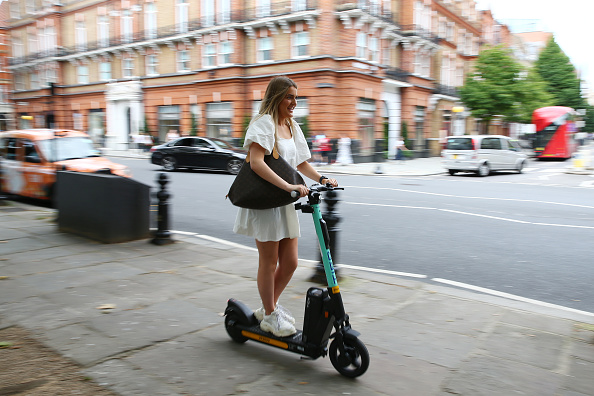As commuters face days of disruption, we need to build a modern transport network

For a year now, e-scooters have been zipping around London since they were first rolled out as part of a trial last June. It’s hard to comprehend how much urban transport has changed since then. There are the sweeping, existential issues of climate change and the role of transport emissions, there is the political and social conversation around accessibility and women’s safety. There has also been a series of strikes, to continue next week, set to bring London and parts of the country to a standstill.
In this context, it makes sense to take our transport cues from investment basics, where diversifying risk is one of the core elements of any portfolio.
E-scooters were once dismissed as a fad or a nuisance. While private e-scooters are a menace that need to be dealt with, rental e-scooters have become accepted as a sustainable mode of transport for cities serious about decarbonising their economies and acknowledging the change in how people move. Many Londoners aren’t moving to and from central to greater London, but travelling just as much, albeit to places closer to home. They might not be going to see the office on a Monday, but they are still going out to see their friends, to socialise and enjoy the city.
E-scooters are also a draw for visitors.
The most popular parking areas for our vehicles cover some of the famed tourist attractions, including the London Eye, the Natural History and Victoria and Albert Museums, Covent Garden, and the National Gallery.
Soon, private e-scooters will be legalised and integrated widely into the transport mix; the government has announced they will legislate to expand their contribution to the promise of a green recovery. But we must still ensure that when the legal use of e-scooters is extended, we take the public along with us and provide them with an accessible mode of transport. It is their support and engagement that is crucial to encourage more people to make long-term changes in their travel behaviour, ditch their cars and make the switch to low-emission electric vehicles.
According to a survey conducted by Opinium, most Londoners would be willing to replace one-in-four of their car or taxi journeys with e-bikes or e-scooters if rental schemes were nearby. Lots of people living in the capital were also interested in using micro-mobility to improve their mental health by spending more time outside, and reducing their emissions.
When there are train strikes or construction of public transport – as we saw with the Northern Line – people are more likely to turn to cars to solve the problem. By adding e-scooters into the mix, we create a broad range of options for a modern city.
However, there are still barriers to access which need to be lowered and infrastructure needs to be in place to ensure safe use for all. Simply putting more vehicles in more London postcodes won’t bring about a shift in how we move unless the government, local authorities and operators work together to create a cohesive system.
It’s important Westminster signals to the public that this is a start of a new era of moving around cities, with regulation in place to put private e-scooters and rentals on a level playing field with robust safety standards.
This safety concern can also address other challenges which are especially acute in our cities. According to research done with Safe & the City, 73 per cent of women would feel safe riding an e-scooter during the day. At night, this drops to 3 per cent. Our transport can be fully integrated with accurate, real-time transport information to help women plan their journeys home. Transport for London has been particularly receptive and proactive in engaging with this research so all parts of the capital’s transport system work in tandem.
New challenges, such as the way we work and move around the city, cannot be solved by the same old solutions. We need a mix of options to keep all lanes of the city moving.
